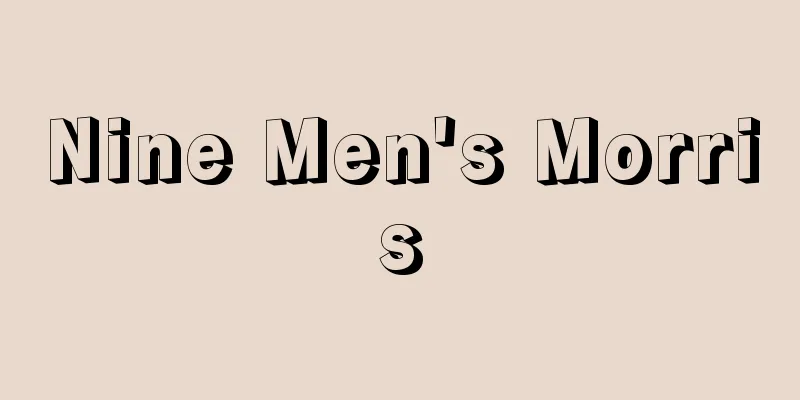Keio University

|
It is a private institution whose origins date back to 1858 (Ansei 5), when Yukichi Fukuzawa opened "Ichika Juku" (a small private school) to teach Dutch studies in his residence in Teppozu, Tsukiji, Edo (present-day Chuo Ward, Tokyo). [Kitamura Kazuyuki] historyIn 1868 (Keio 4), the school moved to a new building in Shiba Shinsenza, and following the system of jointly run schools in the West, students were called "Shachu" (community-run school), and the school was named "Keio Gijuku" after the era name. In 1871 (Meiji 4), the school moved to its current location in Mita (Minato Ward), and revised and revised the existing rules and regulations, publishing "Keio Gijuku Shachu no Yakusoku" (The Promises of the Keio Gijuku Shachu). After that, it became difficult to maintain and run the school, and in 1880 Fukuzawa even considered dissolving it. However, in order to survive in the new era, he invited a head teacher from Harvard University in the United States, and also raised capital for management, and in 1890, he established the Keio University Department, the first private school to consist of departments of literature, finance, and law. In 1898, the entire educational system at Keio was reformed, with a system of kindergarten, general course, and university course, and a consistent education system was established in which graduates of the university course were considered Keio graduates. In 1920 (Taisho 9), Keio University was newly established as a university under the "University Act," becoming the first private comprehensive university with four faculties of literature, economics, law, and medicine, with a preparatory school and a graduate school attached. In 1939 (Showa 14), Fujiwara Institute of Technology, founded by a graduate of Keio, Fujiwara Ginjiro, became Keio's Faculty of Engineering in 1944. In 1947 (Showa 22), Keio University became an educational corporation based on one elementary school (kindergarten), two junior high schools (general and middle schools), three high schools, five faculties (literature, economics, law, medicine, and engineering), and six graduate schools, and in 1949 it transitioned from an old university system to a new university system. Keio University, which celebrated its 100th anniversary in 1958, established the Faculty of Commerce in 1957, and the Faculty of Science and Technology in 1981 (the Faculty of Engineering was abolished in 1984). As of 2010, the university has 10 faculties (Literature, Economics, Law, Commerce, Medicine, Science and Technology, Policy Management, Environmental Information Studies, Nursing and Medical Care, and Pharmacy) with correspondence education departments (Literature, Economics, and Law), and a graduate school consisting of 14 graduate schools (Literature, Economics, Law, Sociology, Commerce, Medicine, Science and Technology, Business Administration, Policy and Media, Law, Health Management, Pharmacy, System Design and Management, and Media Design). In 1987, Keio Nursing Junior College was established (abolished in 2007). It also has various research facilities such as a university hospital, an international center, a language and culture research institute, and a media and communication research institute (the name of which was changed from the Newspaper Research Institute in 1996), and is a leading private school as a comprehensive school with the longest tradition of providing a continuous education from elementary school to high school. The head office is located at 2-15-45 Mita, Minato-ku, Tokyo. [Kitamura Kazuyuki] Keio University Historiographical Institute (ed.) "Keio University Centennial History" Volume 5 and Appendix Volume 1 (1958-69, Keio University) [References] | | |The main building was located in Mita, Shiba Ward (currently Mita, Minato Ward, Tokyo). The public speaking hall is in the far right. "Photographic Edition of Tokyo Scenery" (1893 (Meiji 26)) Owned by the National Diet Library . Keio University (Meiji period) Source: Shogakukan Encyclopedia Nipponica About Encyclopedia Nipponica Information | Legend |
|
私立。1858年(安政5)、福沢諭吉が江戸・築地(つきじ)鉄砲州(てっぽうず)(現東京都中央区)中屋敷に蘭学(らんがく)を教える「一小家塾」を開いたのを起源とする。 [喜多村和之] 歴史1868年(慶応4)に芝新銭座に塾舎を新築移転し、欧米の共立学校の制に倣い、入塾者を社中とよび、社中共立経営の新しい学塾とした。塾名をかりに時の年号にちなみ「慶応義塾」とした。1871年(明治4)現在の地三田(みた)(港区)に移転を機に、従来の規則類を改訂整備し、『慶応義塾社中之約束』を刊行した。その後、義塾の維持経営は困難化し、1880年には福沢は義塾の解散を考えるに至ったくらいであったが、新しい時代に生き残るため、アメリカのハーバード大学から主任教師を招き、あわせて経営のため資本金募集を行うなどして、1890年、文学・理財・法律科からなる私学最初の慶応義塾大学部を設立した。1898年、義塾の学制全般を改め、幼稚舎、普通科、大学科の体系に編成、大学科卒業者を義塾卒業者とする一貫教育制度を確立した。 1920年(大正9)、「大学令」による大学として新発足し、文学、経済学、法学、医学の4学部からなる最初の私立の総合大学となり、予科、大学院を付設した。1939年(昭和14)義塾出身者の藤原銀次郎が設立した藤原工業大学が、1944年に義塾の工学部となった。1947年(昭和22)慶応義塾大学は1小学校(幼稚舎)、2中学校(普通部、中等部)、3高等学校、5学部(文学、経済学、法学、医学、工学)、6大学院研究科を根幹とする学校法人となり、1949年に旧制大学から新制大学へと移行した。 1958年に創立100周年を迎えた慶応義塾大学は、前年の1957年に商学部を、1981年には理工学部(工学部は1984年廃止)を新設し、2010年(平成22)時点で、文学、経済学、法学、商学、医学、理工学、総合政策学、環境情報学、看護医療学、薬学の10学部に通信教育部(文学、経済学、法学)をもつ学部課程と、文学、経済学、法学、社会学、商学、医学、理工学、経営管理、政策・メディア、法務、健康マネジメント、薬学、システムデザイン・マネジメント、メディアデザインの14研究科からなる大学院を擁する。1987年に慶応義塾看護短期大学を併設(2007年廃止)。あわせて大学病院、国際センター、言語文化研究所、メディア・コミュニケーション研究所(1996年新聞研究所が名称変更)などの各種の研究施設をもち、一方で小・中・高等学校の一貫教育を行う、最古の伝統を誇る総合学園として、私学における指導的存在となっている。本部は東京都港区三田2-15-45。 [喜多村和之] 『慶応義塾塾史編纂所編『慶應義塾百年史』5巻・付録1巻(1958~69・慶応義塾大学)』 [参照項目] | | |芝区三田(現在の東京都港区三田)の本館。右奥は演説館。『東京景色写真版』(1893年〈明治26〉)国立国会図書館所蔵"> 慶応義塾大学(明治時代) 出典 小学館 日本大百科全書(ニッポニカ)日本大百科全書(ニッポニカ)について 情報 | 凡例 |
<<: Keio Teito Electric Railway
Recommend
Individual moth seed collection method
…It caused a major outbreak in Europe around 1860...
Janissaries (English spelling)〈Turkish〉yeniçeri
The Ottoman Empire's standing infantry guard c...
Alexander III - Alexander
Russian Emperor (reigned 1881-1894). Son of Alexan...
Insectarium - Insectarium (English spelling)
A facility that exhibits live insects, also known ...
Flowerpot test - Uekibachishiken
...A 1/2000a pot holds 10-15 kg of soil, and the ...
birdie
…An 18-hole course is usually designed with 4 sho...
Satte [city] - Satte
A city in eastern Saitama prefecture. It was incor...
Forbidden book - Kinsho
The term refers to the prohibition of the sale, i...
Jesuit Theatre
…School plays were the mainstream of Western Euro...
Hara clan
There are various branches of medieval samurai. (1...
cognitive descent
… All theories of descent accept that descent is ...
Vserossiiskaya assotsiatsiya proletarskikh pisatelei
…Its official name is the Russian Association of ...
Gigartina exasperata (English spelling) Gigartinaexasperata
…[Mitsuo Chihara]. . . *Some of the terminology t...
European Typewriter - European Typewriter
Typewriter is a typewriter that prints the Latin a...
Kyogenkigo - Kyogenkigo
It is also called "kyogenkigyo." It mean...
![Christmas [island] - Christmas](/upload/images/67cb6f654b411.webp)








